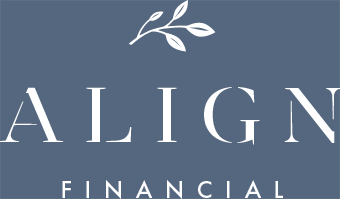Here’s a piece of investment wisdom you might not have heard before: good investing is actually a whole lot like commercial air travel.
Think about it. Remember the last time you were on a plane? Consider the moment the overhead speaker clicked on and you heard those familiar words: This is your captain speaking…
My guess is, although you know the captain made several announcements, you probably can’t recall the exact wording of any of them. If all was going according to plan, they were downright boring — something along the lines of, “Ladies and gentlemen, we’ve now reached our cruising altitude” or “I’ve turned off the seatbelt sign and you’re free to move about the cabin.”
What’s more, you were probably grateful those announcements were boring. Few people, in my experience, have ever wished their pilot would say something more exciting, like, “Hang on tight — we’re going to do a barrel roll!”
Because as thrilling (or, um, terrifying) as that might sound, no sane captain would ever consider it. There’s too much at risk.
Why Good Investment Strategies are Totally Boring
So, what does this have to do with investing?
Well, as the above illustration shows, the point of commercial air travel is to get you from point A to point B safely and effectively, not to take you for a joy ride. Similarly, the point of good investing is to get you to your financial goals with as little risk as possible.
That means that, ideally, your retirement investments should be just as boring as those in-flight announcements you likely tune out. You want your money to make slow, steady, reliable growth — not skyrocket to the top (which often precedes an equally-sheer plummet).
A daredevil pilot could cost you your life. And a daredevil financial advisor could land you in a situation which, as the 2008 financial crisis proves, many of us consider worse than death: running out of money!
So what does that mean for how you go about allocating your own assets?
Implementing Good Investing Strategies
Although we can all agree in theory that taking unnecessary risks — whether in the skies or in the stock market — is an unwise decision, it doesn’t stop investment firms and fly-by-night advisors (pun definitely intended) from trying to sell you an exciting ride.
And to be honest, the sales pitch is very appealing. “Imagine,” they say. “You can out-earn the market. Sure, there’s some risk involved, but your quick growth will be totally worth it.”
Meanwhile, the reality is that most of these harebrained schemes fail to deliver their promises. In fact, they actually do worse than the “boring,” autopilot-style investments typically preferred by many fiduciaries and Certified Financial Planners.
Our investment strategies are backed by history and science as opposed to over-ambitious, loophole-filled plots. We’d rather rely on what we’ve seen working in the past than to take an undue risk on what feels exciting or sounds good.
Good Investing is a Long Game, so Buckle Up
Sometimes, the behaviors and decisions that we see as “boring” can be reframed. Those sleepy flights and slow-but-steadily climbing portfolios are evidence of a steady hand and steady nerves — not complacency or lack of creativity.
Just like an experienced pilot, our priority as financial planners is to help you get where you’re going successfully without risking your life (or your assets). By taking the slow and steady route, we strive to achieve the highest chance of long-term financial stability… which is fancy advisor-speak for “never running out of money in retirement.”
Since few of us can escape the ubiquity of the mainstream media — although I highly suggest you give yourself a break with a full-blown, no-media diet — you’ve probably noticed that the final quarter of 2018 was a rough few months for the market, wiping out all of the gains for the year.
Many experts predict we’re not done with this rough patch yet, and after nearly a decade of steady growth, I’ll be the first to tell you that we’re long overdue for some turbulence. (Again, pun intended.)
While we’ll never panic, we won’t even get concerned until the markets fall a full 20% into bear market territory. And regardless of what comes next, we’ll continue to manage your nest egg by taking the best, boring-est strategy available: planning for the worst, hoping for the best, and taking comfort in the historical trend toward growth.
The world’s greatest companies have always found ways to get better, faster, and stronger, and we’re buckled in for a long, slow ride to the top. So sit back, relax, and feel free to move your seats out of their upright, locked positions. (And don’t forget: you can always reach out to us directly if you have more concerns or questions.)













